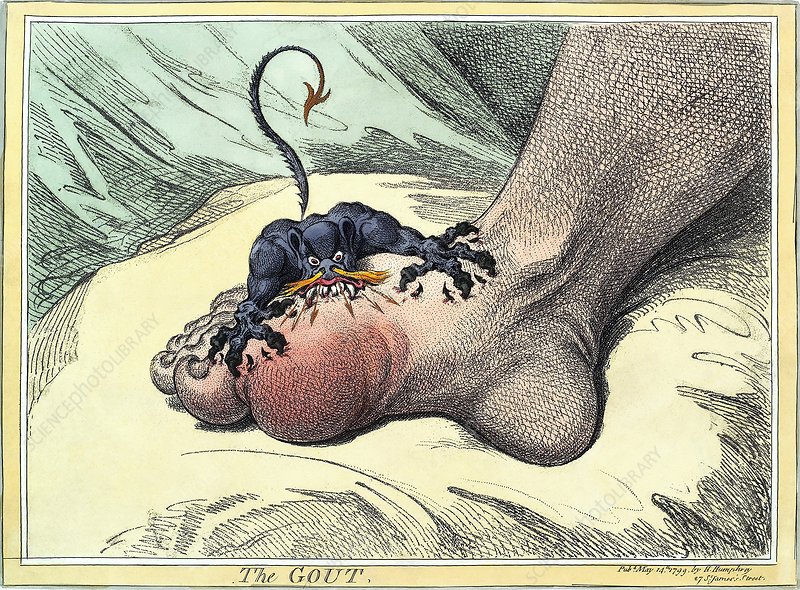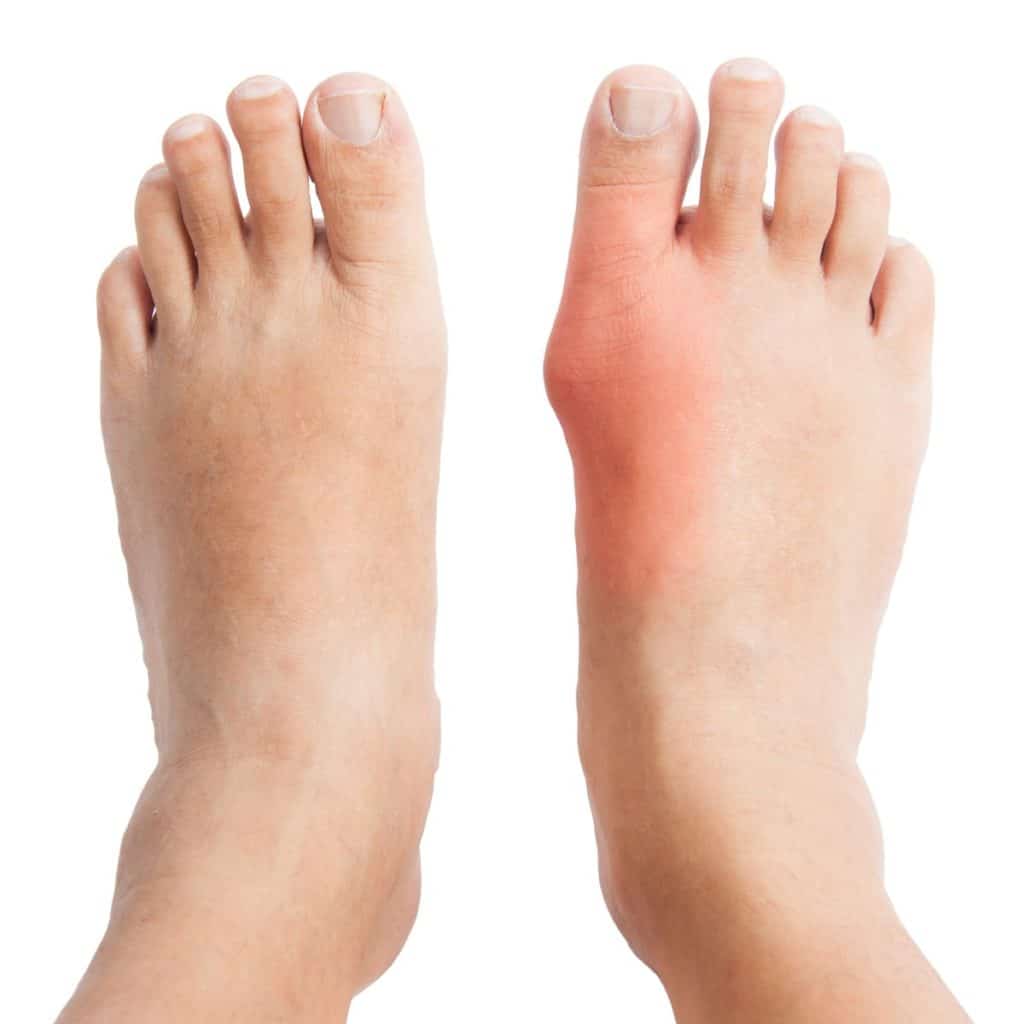Gout is a form of arthritis that can occur when the body’s uric acid levels are severely elevated.
High levels of uric acid in the body form needle-like crystals which lodge in the joints – most commonly the big toe.
These tiny little crystals cause immense amount of pain with the affected area often swollen with a red “glow” and giving off a warm, even hot burning sensation.
What does gout feel like?

Gout is a pain like no other. Some women who have given birth have said gout is more painful than child birth which is saying something!
Gout starts off inconspicuously. There are usually no warning signs that a gout attack are coming on – it just hits you.
During a gout attack, the pain can be described as having hundreds of hot needles being pushed into your joints.
Because Gout usually targets the big toe, walking can be extremely painful or in severe cases impossible.
Even the lightest touch of a bed sheet can cause immense amounts of pain.
What does gout look like?
More often than not, there are visible signs than accompany the feeling of gout.
The most common thing to look for is swelling in sore joints along with redness in and around the joint.

Who can get gout?
Theoretically almost anyone can get gout, but it is generally only experienced by around 5% of the population.
Men are more likely to experience gout than women, with Maori or Pacific island people at greater risk compared to non-Maori or non-Pacific ethnicities.
Gout used to be called the “rich man’s disease” because hundreds and even thousands of years ago it was thought only wealthy people who could afford expensive foods like sugar, alcohol, red meat and shellfish would suffer from gout.
What causes gout?
There are many factors that come in to play with Gout.
High Uric Acid Levels
Uric Acid is the main indicator when it comes to assessing gout risk.
Gout can occur in uric acid levels as low as 6 mg per 100 ml (357 µmol/l) but some people can have serum values as high as 9.6 mg per 100 ml (565 µmol/l) and not experience any gout effects.
For this reason, uric acid levels are only one indicator of gout risk. Other factors such as age, weight, genetics, diet and lifestyle must also be entered into the equation when assessing the risk of experiencing gout.
Gender
If you’re a male, you’re around 3x more likely to get Gout compared to females.
Age
Gout usually affects men after the age of 40, however can occur in younger men who are genetically predispositioned to be at high risk of gout.
Women generally don’t suffer from Gout until after menopause.
Diet
Your diet can play a big role in how and if gout affects you.
If you eat healthy foods which are low in sugar, eat lots of vegetables and avoid foods that cause gout, you will lessen your chances of a gout attack.
If Gout runs in your family genes, you may be fighting a losing battle if diet is your only focus as diet alone may not be able to lower uric acid levels significantly enough to avoid gout.
Genes
Some people are genetically predispositioned to suffer from gout through naturally high uric acid levels.
Ask your parents, grandparents and siblings if they have any history of gout. Often if your family has a history of gout, there is little you can do in the way of lifestyle changes to truly help and gout medication is the only way to go.
Weight
Your weight can also play a big part in how likely you are to experience a gout attack.
If you are overweight or obese, you are at a higher risk of a gout attack.
Overweight people also tend to experience gout attacks at a younger age.
What happens if I don’t treat gout?
If you don’t do anything to treat your gout problem, you will likely continue having gout attacks for the rest of your life. The frequency of attacks may also increase if risk factors such as diet and lifestyle don’t change.
In extreme cases, gout which is left untreated can cause deformities to the affected limbs such as feet, toes and fingers.
This happens through the formation of tophi which are deposits of uric acid crystals which can build up in people with longstanding hyperuricemia.
Tophi form in the joints, cartilage, bones and sometimes break through the skin to appear as white nodules.
If left untreated, Tophi can cause bone destruction and lead to noticeable disabilities.
Tophi generally only forms after a very long period of hyperuricemia which is why it is important to start combatting gout as early as possible.

URICAH! Uric Acid Support
4.85 / 5
read 2,162 customer reviews
$39 AUDTHIS IS YOUR URICAH MOMENT
Our 14 potent, natural ingredients support the body in lowering uric acid levels, alleviating the excruciating pain and discomfort caused by gout.
URICAH™ features powerful ingredients used over thousands of years to fight gout such as Tart Cherry, Celery Seed and Chanca Piedra.
Get back on your feet and live pain free with URICAH™.
LEARN MORE